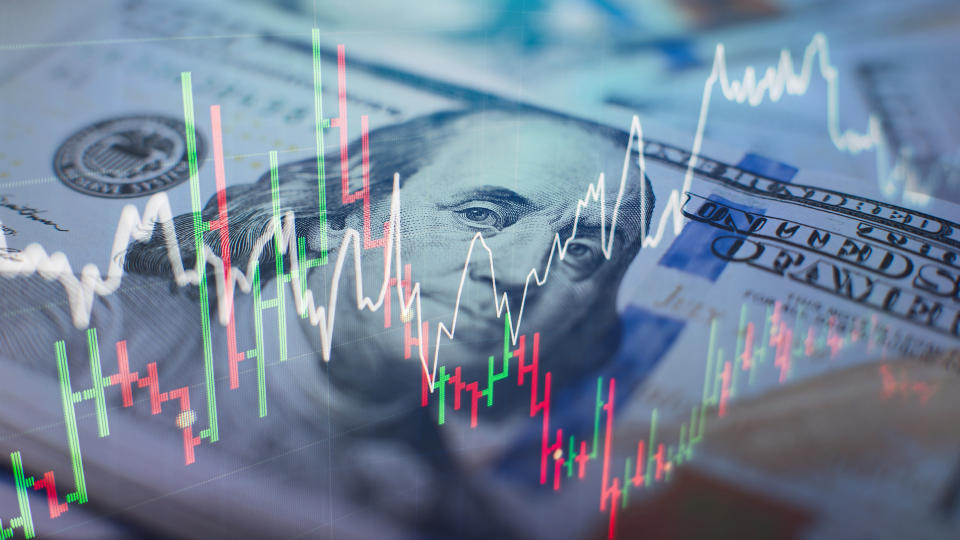6 Things You Must Do When Your Stock Investments Reach $50,000

When you’ve got a stock portfolio worth $50,000, you’ve done a pretty good job of saving. While that won’t get you very far if you’re close to retirement, if you’re in your 20s or 30s, you’re on your way to building a comfortable nest egg.
Grant Cardone Says Passive Income Is the Key To Building Wealth: Here’s His No. 1 Way To Get It
Learn: 3 Things You Must Do When Your Savings Reach $50,000
But a nice stock portfolio is only part of the equation when it comes to overall financial security. With a $50,000 stock portfolio, you’ve demonstrated that you know how to sock away money and get it invested.
Now’s the time to look at other aspects of your financial life and see whether they are on the right track as well.
Pad Your Emergency Fund
Your emergency fund should be the cornerstone of your financial house. Once you’ve saved $50,000 in your stock portfolio, it’s time to double-check that your emergency fund is in order as well.
Most experts recommend that you save somewhere between three and six months of expenses in an emergency fund, but if you’re self-employed or have an unstable work situation, one year might be a more appropriate level.
If you’ve been funneling money exclusively into your stock portfolio, now’s a good time to add to your emergency fund if it isn’t up to the levels it should be.
Diversify Your Investments
If you’ve got $50,000 in a stock portfolio, it’s time to make sure your investments are diversified. While you may have ridden just one or a few names to get you where you are, it’s important at this level to spread out your risk a bit.
Properly done, diversification can offer you the same upside return while limiting your downside potential, so it’s a key strategic move to make. It’s easier than ever to diversify now, thanks to zero-commission trading and the availability of fractional shares, so make sure you aren’t overlooking this important step in building your long-term portfolio.
Trim Your Losers
Even the best stock pickers can’t get them all right, so it’s highly likely that your $50,000 stock portfolio has some losers in it. This is a good time to review what you have and prune stocks that no longer have the potential that you may have found in them originally.
You’ll have to take your time and do some research with this step. Just because a stock is trading down doesn’t mean it’s a long-term loser, so don’t make the mistake of unloading stocks that still offer upside earnings potential. Save your sell orders for those that repeatedly miss their earnings estimates or that simply don’t seem to be on the right track.
Look for Potential Tax-Loss Candidates
One of the benefits of having some losing positions in your portfolio is that you can take a tax loss. If you sell a stock at a loss, you can use it to offset any gains you have taken in your portfolio. You can even offset up to $3,000 of your regular income.
To avoid a wash sale, in which your loss is disallowed, you’ll have to avoid buying a “substantially identical security” in the 30 days before and after your sale. But the law allows you to avoid running afoul of the wash sale rules if you sell one index fund and buy another, for example, as long as they don’t have identical assets.
If you have questions about how to implement this strategy successfully, talk to a financial or tax advisor.
Be Sure You’re Out of Debt
Building wealth in your stock account is an important step to financial freedom; but, if you’re still burdened with high-interest consumer debt, you’re really just spinning your wheels.
The stock market has historically returned about 10% per year on average, but the interest rates on credit cards now average over 20%. If you’re still carrying a credit balance and paying an exorbitant rate of interest, you’ll actually be dragging your net worth down even if your stock portfolio is going gangbusters.
If you’ve shown the ability to save and invest to the point that you have $50,000 in stocks, you should have the discipline to pay off all of your credit card debt as well.
Increase Your Contributions
Once you’ve been saving and investing regularly for a while, you likely don’t even feel the sting any more when money automatically transfers out of your checking account into your investments. This is the time to ramp up your contributions to the point they hurt a bit once again.
For example, if you’re used to saving 10% of your income, bump that up to 12% or even 15%. You might have to make a few cuts to the discretionary part of your budget, but soon enough you’ll get used to living off even less. In the meantime, your long-term investment portfolio will reap significant rewards.
More From GOBankingRates
Robert Kiyosaki Shares 7 Steps To Reach Your Financial Goals
This Mistake Can Tank Your Credit Score 100 Points Overnight
This article originally appeared on GOBankingRates.com: 6 Things You Must Do When Your Stock Investments Reach $50,000

 Yahoo Finance
Yahoo Finance 